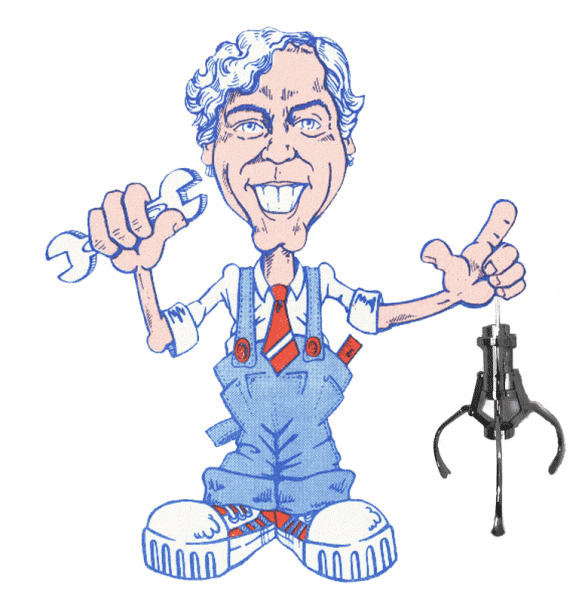 Here’s the Ticket
Here’s the Ticket
I am a big fan of noticing new technologies and how they are used in our industry and more importantly how they can affect our industry, both positively and negatively. Here is a brief summary of those that caught my eye over the past two months:
Smart Cards are rapidly replacing magstripe credit cards. Credit and debit cards with an embedded microchip are coming quickly to the U.S. There are already over 1 billion of these cards being used throughout the world. These new technology cards are reported to be more secure and reduce the risk of ‘skimming’ to produce counterfeit cards. The U.S. has lagged behind because the cost is estimated to be greater than $35 billion, but come October 2015 liability for fraud losses will be by law placed on the party of any transaction that uses a lesser technology. Another reason why the changeover will happen quickly is that consumers are feeling threatened with all of the cyber-attacks that have been done to several of the leading retail chains with the older technology magstripe cards.
What this could mean. The new chip embedded readers will also be able to accept mobile contactless cell phone pin-enabled payments through the use of an app. This is called Near Field Communication or NFC. This technology will need to be incorporated by all of our industry bill changers and debit card kiosks, POS stations and ATMs. Hopefully our suppliers are already working on this. Also, we must make sure that all of our magstripe readers are upgraded to the new chip embedded technology before October 2015 or we would individually be liable for fraud losses. So far I do not have enough information to know if or how our magstripe debit card readers for a closed system would be affected. Perhaps that situation would arise if credit card and cell phone payments are made directly to each of our games independently.
Another situation to be aware of is a new technology that is being introduced by our credit card companies without us even realizing it. Credit and debit cards are currently being issued that contain embedded wi-fi chips so the cards can be used for contactless transactions. These cards show a wi-fi icon and use old RFID technology. It has been reported that ‘electronic pickpocketing’ can easily occur by someone placing a scanner near your card even when it is in your wallet or purse. There are currently more than 1 Billion of these wi-fi cards in circulation, with the remaining 2/3rds not yet having this technology added. The only solution I have seen is to put a protective sleeve around your card to reduce the risk of having your card information hacked. But what happens when we hand our card to a waiter or to have it swiped by someone?
Combine Multiple Credit Cards into a One Card Package.
 A new electronic device called ‘Coin’ (onlycoin.com) will be on the market this summer that can store up to 8 credit/debit, bank, and loyalty cards so you only need to carry 1 Coin card. A simple mobile card reader plugs into the headphone jack of your smart phone that permits an unlimited number of magstripe cards to be synced. A button on Coin allows for your selection of a specific card and then locks that card in until Coin is swiped for payment.
A new electronic device called ‘Coin’ (onlycoin.com) will be on the market this summer that can store up to 8 credit/debit, bank, and loyalty cards so you only need to carry 1 Coin card. A simple mobile card reader plugs into the headphone jack of your smart phone that permits an unlimited number of magstripe cards to be synced. A button on Coin allows for your selection of a specific card and then locks that card in until Coin is swiped for payment.
One of the features we were impressed with is that Coin alerts your cell phone when it is more than 25 feet away from it, so if you forget to take Coin with you or it is stolen, you know immediately and can disable it.
This new technology does not yet work with smart cards that have embedded chips but soon will. It is an electronic device and does not yet have a replaceable or rechargeable battery chip so the Coin card will eventually need to be replaced.
What this could mean. The concept is still in the early stages, but it gives us a good sense of where payment technology is heading. First to contactless readers, then to smart cards, and then to needing to carry around just one card or one wearable item. The other option will be to be able to pay for everything with your smart phone (when it still has a charge, when it is permitted, and if you choose to carry it in certain situations). As far as our industry goes, it should be obvious that our society we will soon be cashless (people do not carry much cash around even now and the taxing authorities do not like the concept of cash) and we should not become lazy and think that people will continue to take the additional steps to go to bill changers and kiosks to get coins or debit cards to play our games and attractions. It is also reasonable to assume that in the near future, people will not want to carry loyalty cards or our individual location debit cards unless they can be included in an electronic package similar to Coin. Our best option seems to be to pay close attention to the vending industry so that our industry does not lag too far behind. There is no reason why we should be caught by surprise and crash because we did not adapt to new payment technologies. Never forget the fact that we are an impulse industry and therefore must make it very convenient for our customers to get the game started.

More New Products & New Technology
Interactive Waterslides (as reported in The Stringer Report)- WhiteWater West showed a new technology concept at IAAPA called ‘Slideboarding’ – where the inside circular walls of the water park’s enclosed waterslide is fitted with LED lighting that is used to relay visuals for a game experience interacted by the rider’s unique mat combining a waterproof game controller. The first of its kind, this is opening up a brand new genre for waterparks and interactive game play. The riders use their mat controllers, interacting with the video wall display combined within the waterslide tube. The player on these modified ‘racer mats’ uses the controls to hit the corresponding button to the colored lighted areas that they are speeding through within the waterslide. The analogy used to explain the game is like playing ‘Guitar Heroes’ while riding it!
No stranger to adding an interactive play element to the water park market, WhiteWater West however has gone to a new level of interactivity and immersion to create the ‘Slideboarding’ experience, turning the water slide tube into a video wall and a canvas for game experiences. The proposal is to utilize the game into parts of the whole waterslide attraction to begin with. The repeat visitation of a reprogrammable water slide is an element in driving this initiative by the company – with riders increasing scores, which will be recorded on the company’s RFID wristbands. The company is hoping to marry this with a home game element (so players can build their scores away from the attraction).
What this could mean. This concept can be implemented on many FEC attractions, adding to their interactivity during the experience and being able to expand levels away from the actual attraction. TRR wrote about how the laser tag industry is investing in this concept with great success. The next step is to incorporate cell phone interactivity into attractions, and of course, waterproof cell phones for waterpark applications. This concept is one that should provide FECs with additional ways to attract out-of-home entertainment experiences.
What about ‘Wearable’ Payments? We have all heard that cash will soon be replaced, but is it possible that chip embedded wearable items such as watches, wristbands, or even rings could become the most popular form of payment? This is not so farfetched when one considers that contactless payments are growing at a rapid rate and fishing out and flashing a credit card or cell phone may then seem like a wasted motion when a wearable item would accomplish the same thing.
What this could mean. It is unlikely that wearable payments will take the place of smart cards and smart phones, but there will be a place for them. Many entertainment venues are using smart-wristbands as a payment option, especially in waterparks and other venues where the public would not easily be able to carry cash or plastic or cell phones. Wearable technology gives us the opportunity to create our own brand of payment just like a debit card system but with other wearable objects or unique product designs, rather than having only one payment option of debit cards. Children may also quickly adapt to bringing a branded wearable item to an FEC rather than a branded debit card.

 Bright LED lighting with changing colors has been proven to attract players to games, just as it does to advertising signage. Jason has replaced the incandescent rope lighting with LED strips on his Skeeball Marquee and added LED lights to the Skeeball lanes. The results are impressive and Skeeball revenues have shown a significant increase, especially in this case when the lanes are flanked on both sides by Big Bass Wheel’s.
Bright LED lighting with changing colors has been proven to attract players to games, just as it does to advertising signage. Jason has replaced the incandescent rope lighting with LED strips on his Skeeball Marquee and added LED lights to the Skeeball lanes. The results are impressive and Skeeball revenues have shown a significant increase, especially in this case when the lanes are flanked on both sides by Big Bass Wheel’s. 






 A new electronic device called ‘Coin’ (onlycoin.com) will be on the market this summer that can store up to 8 credit/debit, bank, and loyalty cards so you only need to carry 1 Coin card. A simple mobile card reader plugs into the headphone jack of your smart phone that permits an unlimited number of magstripe cards to be synced. A button on Coin allows for your selection of a specific card and then locks that card in until Coin is swiped for payment.
A new electronic device called ‘Coin’ (onlycoin.com) will be on the market this summer that can store up to 8 credit/debit, bank, and loyalty cards so you only need to carry 1 Coin card. A simple mobile card reader plugs into the headphone jack of your smart phone that permits an unlimited number of magstripe cards to be synced. A button on Coin allows for your selection of a specific card and then locks that card in until Coin is swiped for payment.


